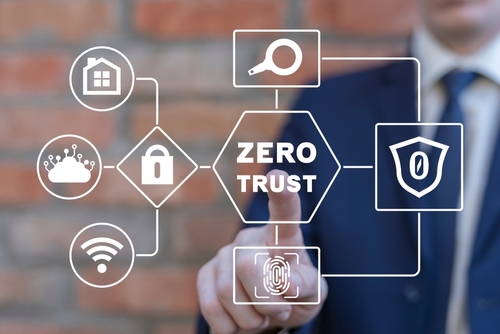In today's digital world, organizations of all sizes and industries are highly prone to data breaches, making traditional security models incapable of protecting sensitive information. This brought in an era of Zero Trust Model, a revolutionary approach that challenges the notion of trust within network architectures. Let's try understanding it under laymen terms.
To begin with,
What is Zero Trust Model?
To understand Zero Trust Models we have to first understand how modern network architecture works. Modern network is similar to an airport. To get through the security at an airport, one needs valid ID and a boarding pass, after which they are free to move inside to their own will. Similarly most networks need a valid ID and password to enter, after which there are lesser security measures. The assumption is is that people inside the organization are trust worthy, which has led to major data theft with hackers being able to penetrate through the network.
Zero Trust Model (ZTM) grants access based on a person's identity and role in the organization. We can take the same case of airport to understand this. Once you enter the airport, you can only go through the terminal and gate of your plane and not of the other planes. Similarly, ZTM ensures that a user accesses the particular network resource that they wish to use or are meant to use and are restricted to all other resources, through a series of continuous context analysis and authentication.

Why is the Zero Trust Model significant?
The ZTM has been around for a decade now, ever-growing and developing. With the COVID 19 pandemic in 2020 and people working from remote locations, the need for ZTM has been higher than ever. When someone tries to access a network resource, context analysis looks at the user permissions, authenticates the user, looks at the device the user is using to access the network, and sees if the device belongs on the network, if the device is updated/patched, if it has antivirus/required software, and makes sure the policies on the device are correct. Zero trust does a deep analysis of the user, device, and resource they are trying to access, making it far more secure than traditional security architectures. ZTM is applicable to various other IOT devices, thus securing them using hardware IDs, MAC addresses etc.
Micro segmentation in Zero Trust Model
First let us understand what Micro-segmentation is. Micro-segmentation creates secure zones across cloud and data center environments to isolate application workloads from one another and secure them individually. It prevents potential threats from spreading across the enterprise network. But how exactly does micro segmentation join hands with ZTM?
Micro segmentation is in fact the first step to Zero Trust security, as micro segmentation works at a granular host level, makes it possible for organizations to implement zero-trust security within their security infrastructure, regardless of whether the workloads/applications are in the data center or the cloud. Any connection which cannot be verified by the policy parameters is blocked, ensuring lateral movement and unauthorized access are not only prevented but immediately flagged for investigation and remediation. This builds a zero-trust security micro perimeter around applications and reduces the attack surface to a minimum.
How to implement a Zero Trust Security Model?
A ZTM can be implemented in 5 steps:
There are several obstacles to implement this which includes high cost and effort, as one needs to figure out how to segment the network and determine who needs to be allowed access to what, thus ultimately making it a very complex infrastructure, in consideration of the huge number of servers, databases, etc.
So how do organizations enforce Zero Trust policies effectively and efficiently?
Enforcing zero-trust policies effectively and efficiently requires a combination of technological solutions, organizational practices, and employee awareness. Critical assets and data should be identified from least to highest level of protection, regular review and updating of access permissions based on job roles and responsibilities, continuous vigilant monitoring, encrypting data both in transit and at rest, securing endpoints (such as laptops, desktops, and mobile devices) with endpoint protection solutions, including antivirus software, endpoint detection and response (EDR) tools, and mobile device management (MDM) solutions, conducting regular audits and lastly spreading awareness and teaching employees on security practices and protocols are few of the necessary steps taken by companies to safeguard their sensitive information and overall enhance their security posture.
Conclusion:
Zero Trust Security is a guilty-until-proven-innocent approach to network security, which proved to be a game changer in the field of cybersecurity with the rise in cyber theft. By embracing the principles of zero trust, you can empower your organization to thrive in an ever-changing digital landscape, confident in the knowledge that your data and assets are protected against even the most sophisticated adversaries, while also staying informed about emerging threats and technologies.





0 Comments